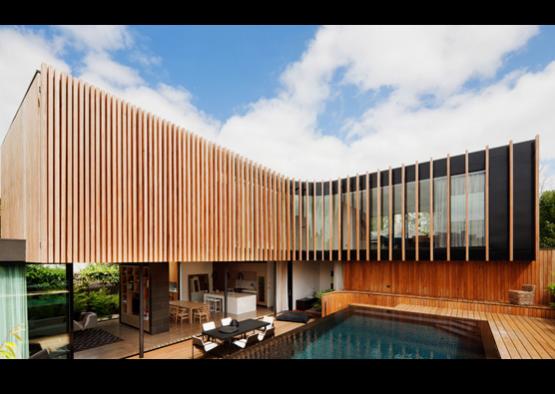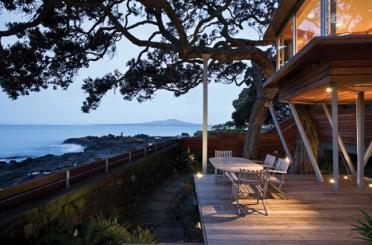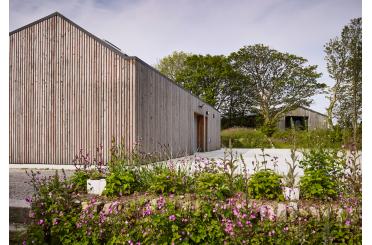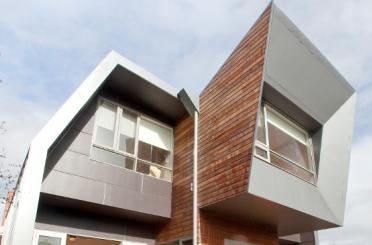
Overview
The existing site contained a grand Victorian dwelling badly in need of repair, of which only the front elements have been retained. The renovation brief was extensive, including an upper level addition, garage and pool.
“Our choice, given the depth of the site, was to separate rather than attach the new works to the rear of the existing building, which allowed us to create textured areas of external space between old and new objects,” says architect Matt Gibson. “Two levels of new ‘L’-shaped floor area are stacked on top of each other at the rear, utilising the limits of the site.”
Ground level links are made via a garage and a circulation ‘bridge’ extending off the existing hallway, which continues as a main axis through new and old to the rear of the site.
Although the new work is deliberately set apart as a pavilion, it is intentionally recessive from the street – increasing in interest when the end of the axis is reached, and leaving little memory of the original Victorian dwelling.
Story and pictures by special arrangement with timber+DESIGN International magazine (www.timberdesignmag.com)
Structure
At the rear of the site, 70 solid blackbutt fins functionally address ‘overlooking’ and solar emission concerns. They were computer-modelled in 3D several times to achieve the right rhythm and graduation in their spacing. They also introduce a diurnal kinetic element, with the glass remaining dark and recessive during the day, and morphing at night to the facade.
Engineers and timber experts were engaged to provide prototypes for the full-height fins that would not bow, and that matched the colour of the silvertop ash shiplap. The decision went in favour of high-durability recycled blackbutt with central lamination. They are supported by elegantly concealed, top and bottom steel connections, without requiring further secondary lateral support such as face straps or threaded rods.
The architects say their choice of timber products was based on four benefits: low embodied energy material (recycled timbers and/or radial sawn timber materials locally grown from re-growth forests); re-salvaged and minimal waste blackbutt fins; timber is a carbon store; timber is light, strong and durable and its ease of construction makes it a perfect choice for external cladding.
Exterior
Unlike other homes in the street that present the Victorian notion of villa-on-green-field, the Kooyong Rd house celebrates nuances of both, with the additions acting as an urban oasis reaching out and embracing their environment.
The sensuous use of timber cladding and the employment of radii/curved corners within the apexes of the stacked ‘L’s also enhance a more sculptured and playful point of difference to the rigidity and masculinity the existing building.
The central courtyard area is perhaps the most interestingly spatial experience and reading of the history of the site. A glass prism, openable to the elements, links a metaphorical bridge between old and new, and provides an important temperature regulator.
The ‘stacked’ floors of the timber facade wall combine and separate in opposite directions in a ‘paper tearing’ action – accentuating the more sinuous and organic drama of the rear building.



